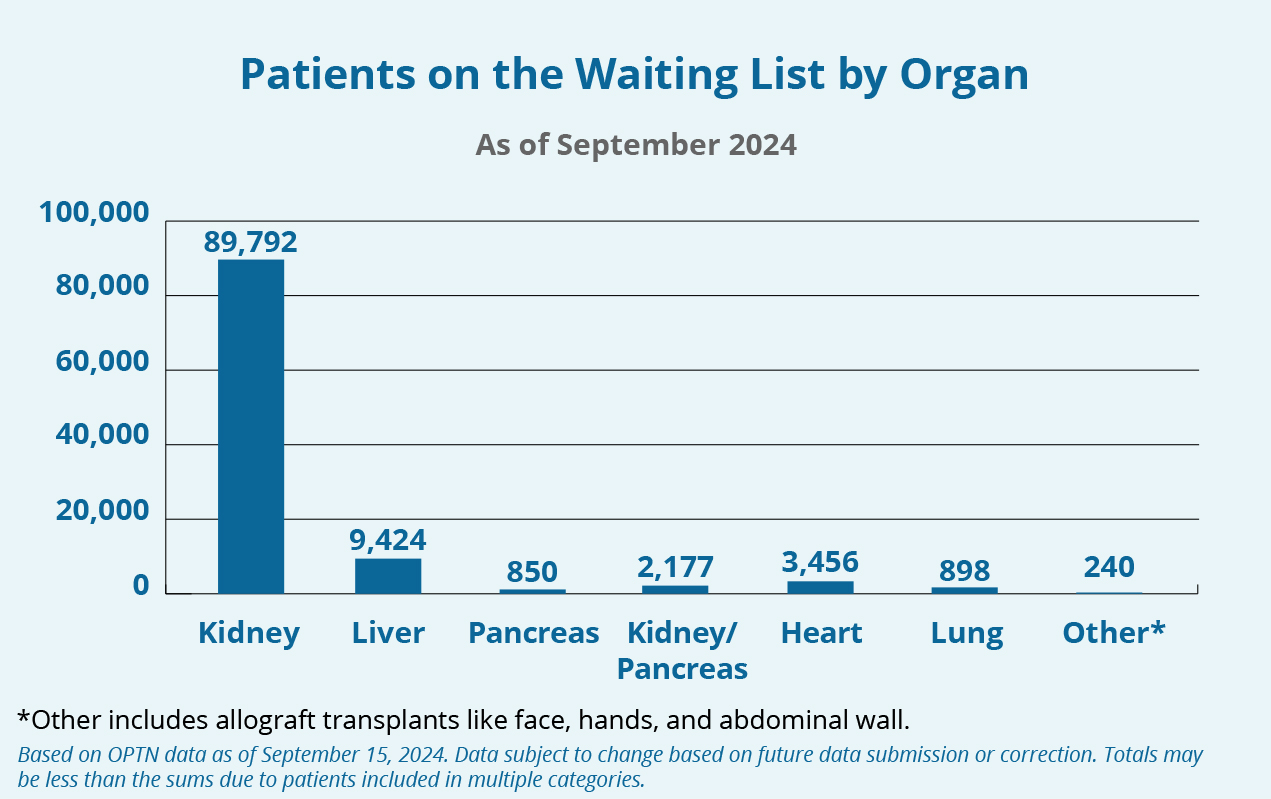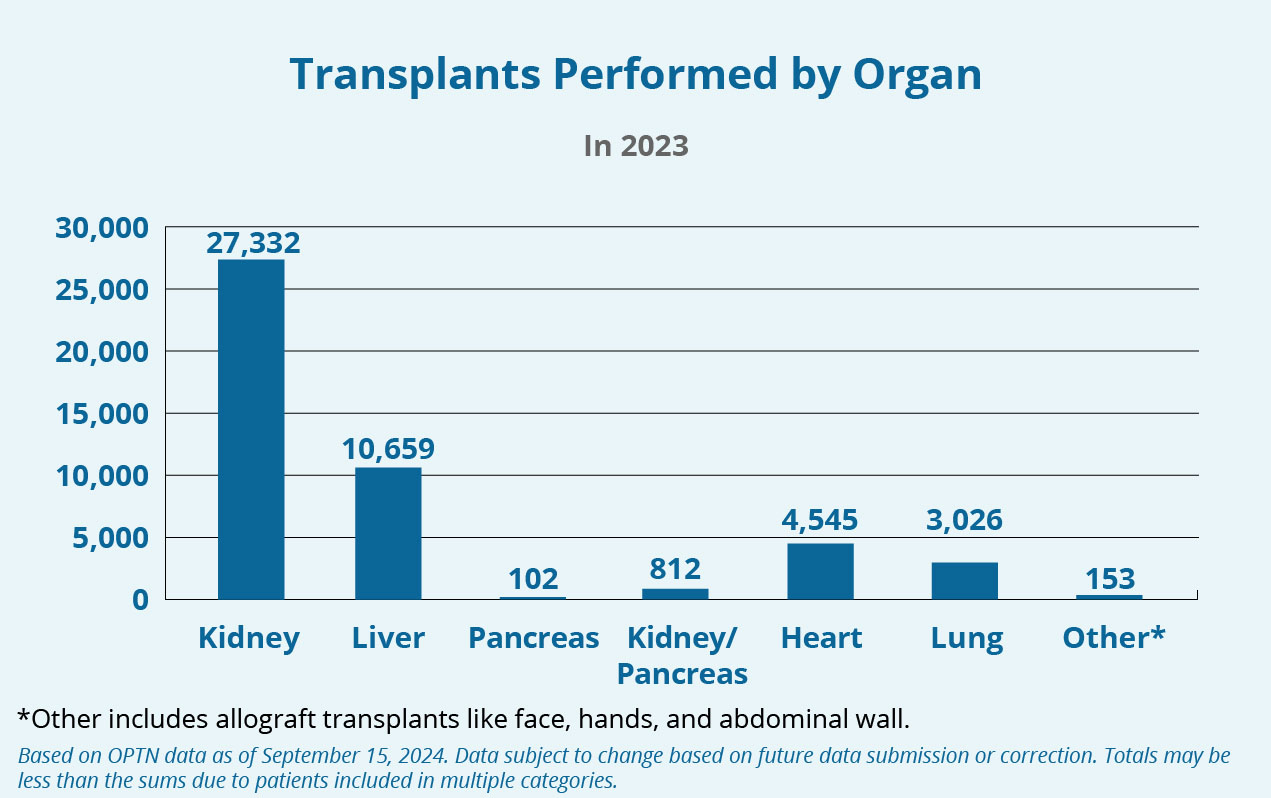103,223
Number of men, women, and children on the national transplant waiting list.
How many people are waiting for a transplant? Who receives organs, and what organs are most needed? Explore data from the Organ Procurement and Transplantation Network.

13
people die each day waiting for an organ transplant.

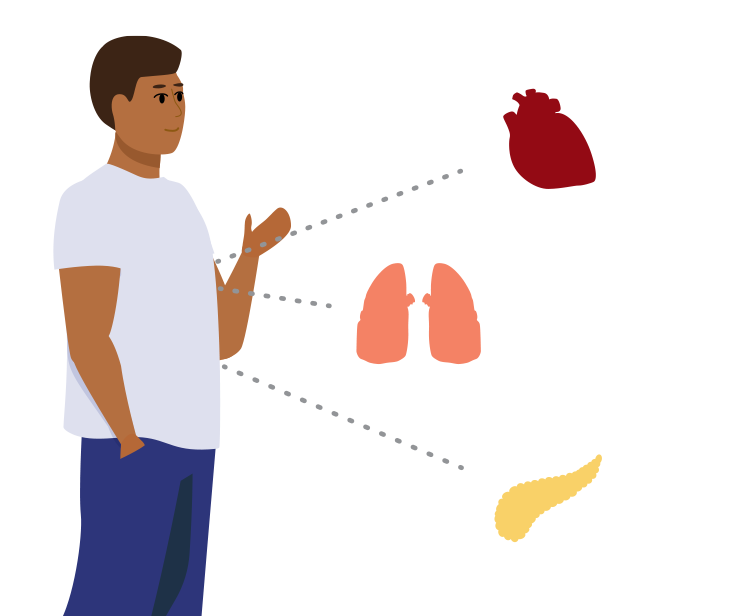
Every donor can save 8 lives and enhance over 75 more.
YOU can help.
48,000+
transplants were performed in 2024.
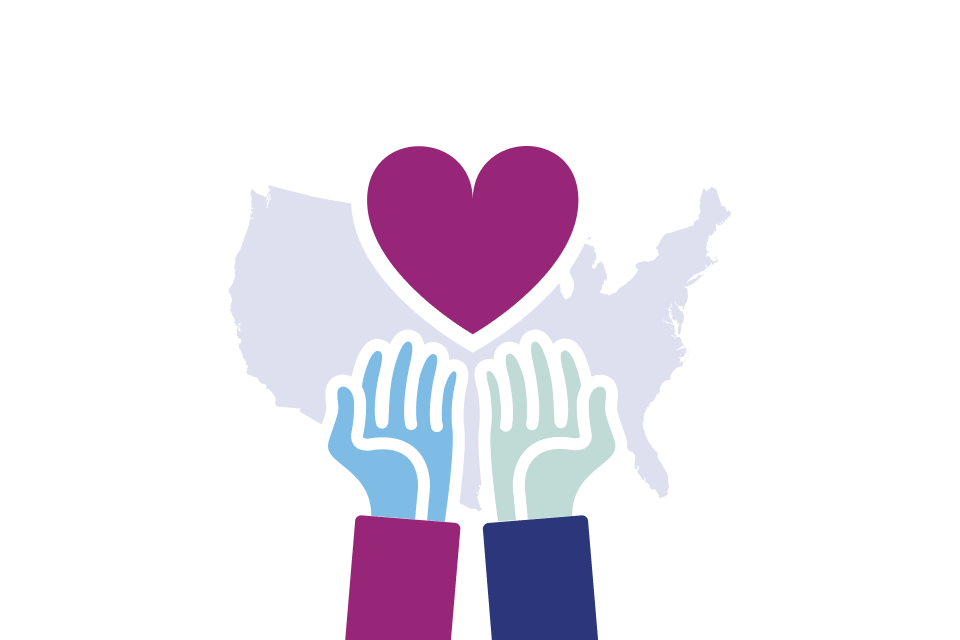

Every 8 minutes another person is added to the transplant waiting list.
The "Patients on the waiting list by organ as of September 2024" chart shows a snapshot in time (number of patients on the waiting list on a specific day, in this case, September 15, 2024), while "Transplants performed by Organ" shows the total of transplants over the course of months or an entire year (in this case, in 2023), in other words not for a specific day. Every day, patients are added and removed from the Waiting List. The figures in the charts are provided to give high-level information about organ transplant statistics at a certain point in time.
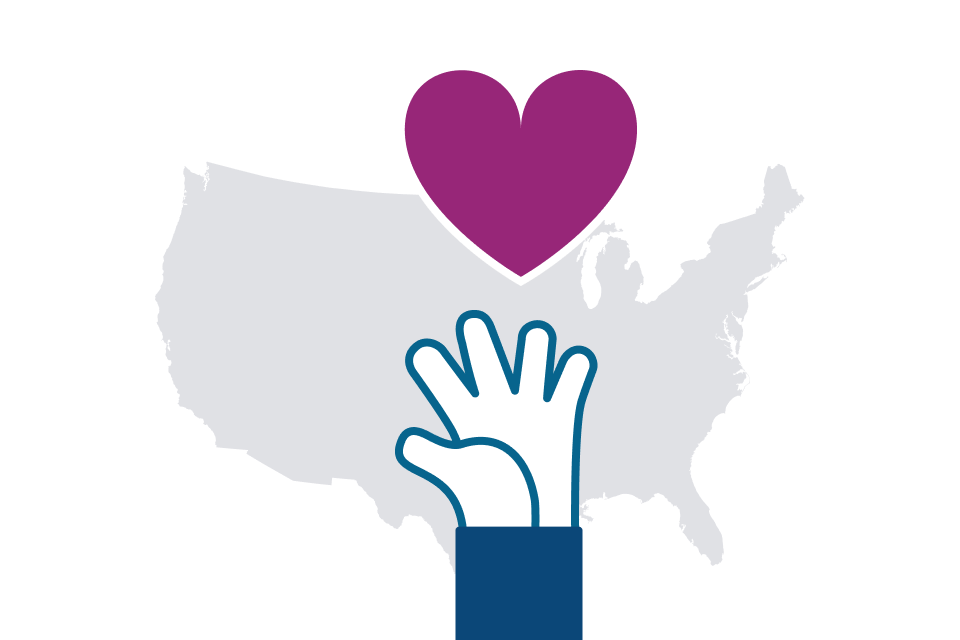
Make more possible.
Find more statistics
The Organ Procurement and Transplantation Network maintains the national database of information about the candidate waiting list and transplant surgeries. You can build a custom report on their website to learn more about organ transplantation in the U.S.
Looking for more statistics? The Organ Donation and Transplantation Dashboard from the HRSA Data Warehouse displays end of year, national-level data and yearly trends.
Learn more about organ transplantation by the numbers
There are currently over 103,000 people on the national transplant waiting list. You can learn more about the numbers and see specific statistical breakdowns with Organ Procurement and Transplantation Network National Data.
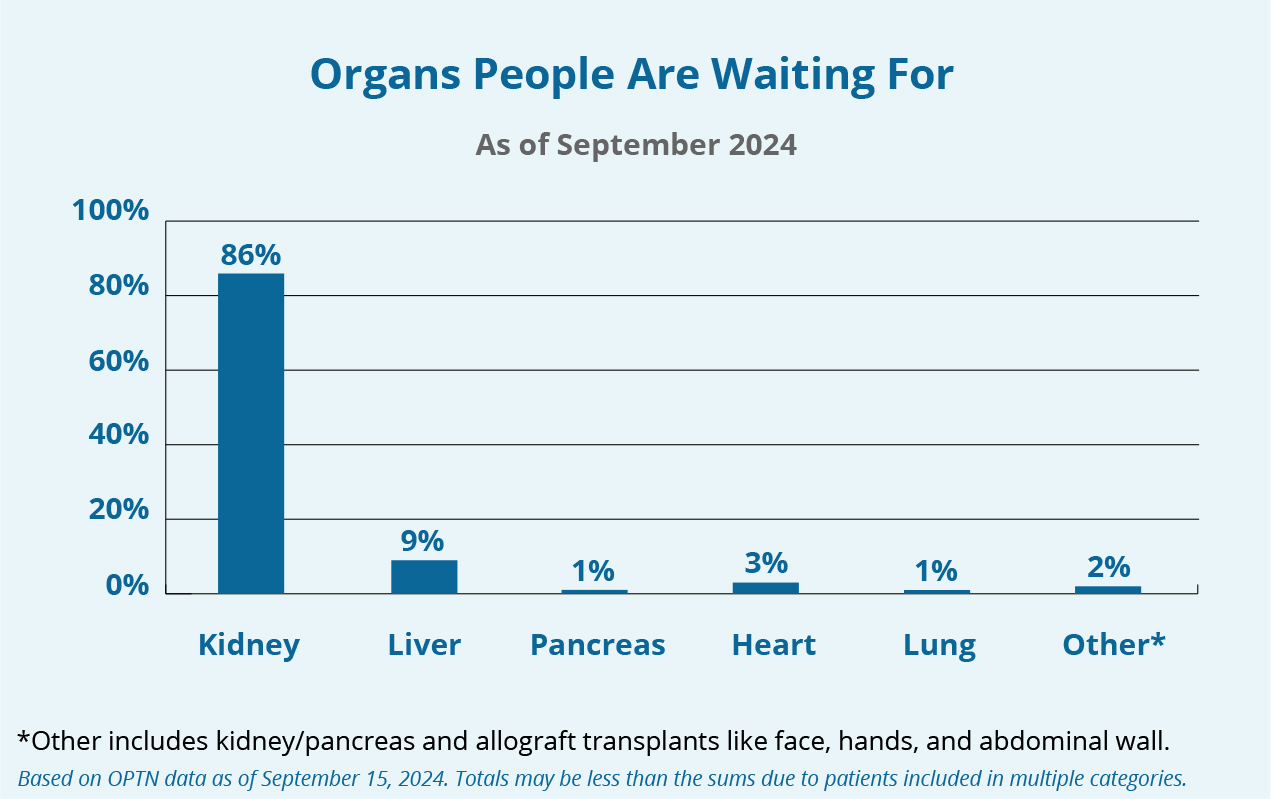
Detailed description of Organs People Are Waiting For
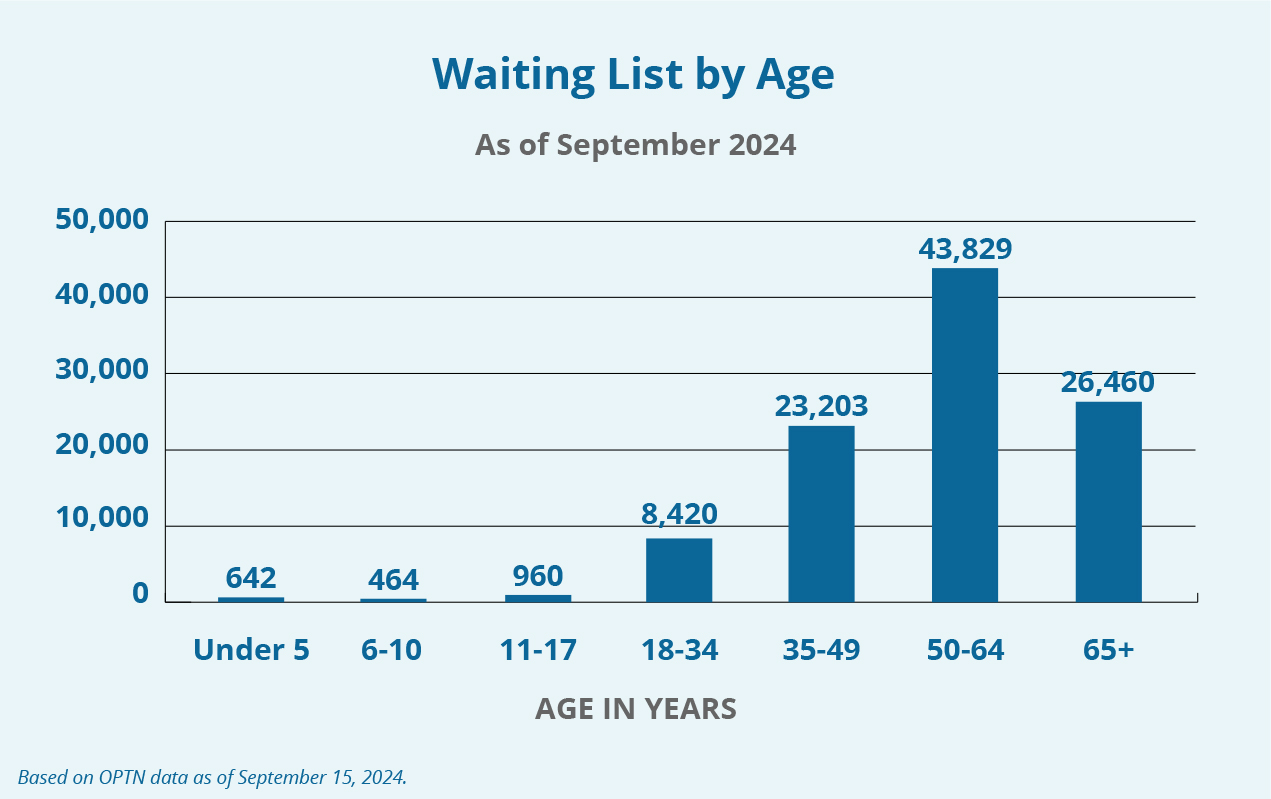
Shared ethnicity is NOT a requirement for matching organ donors and recipients. Matches between donors and recipients of different ethnicities are very common.
Still, a larger donor registry gives everyone on the transplant waiting list a better chance to find a good donor match. Because the genetic markers used to match organ donors and recipients are inherited, people with rare markers are more likely to match someone with a shared racial or ethnic background. Learn more about matching.
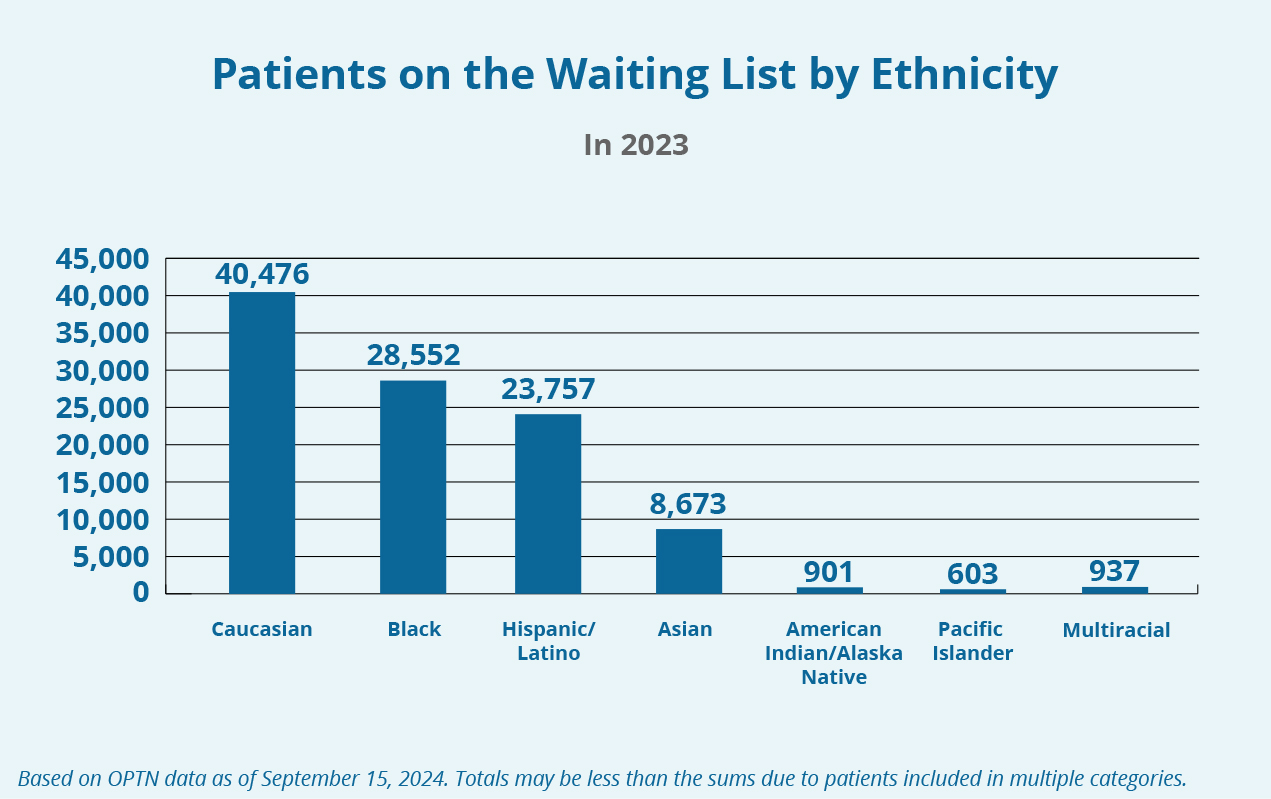
Detailed description of Patients on the Waiting List by Ethnicity

Detailed description of Transplants Performed by Recipient Ethnicity
According to a sample of the U.S. population, 90% of adults support organ donation but only 60% are actually signed up as donors. Source: 2019 National Survey of Organ Donation Attitudes and Practices.
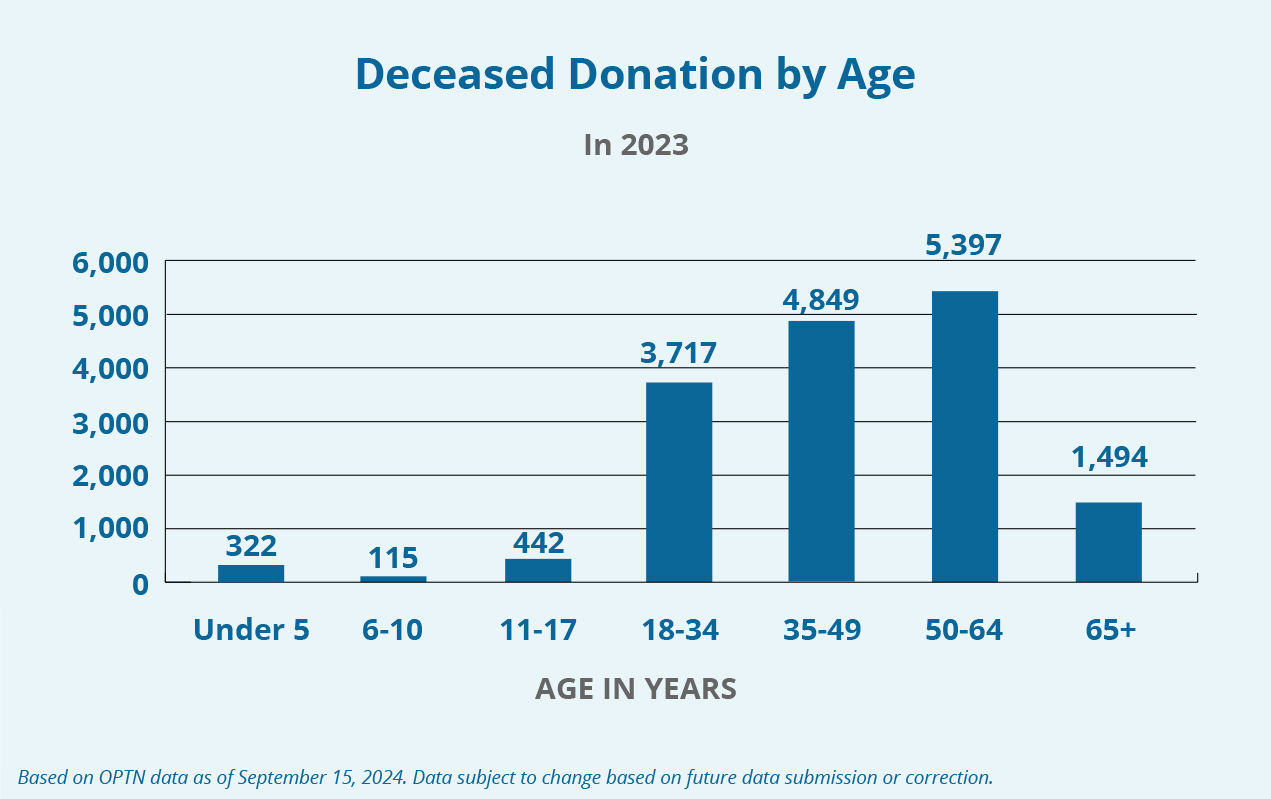
Detailed description of Deceased Donation by Age
You’re never too old to save lives as a donor. One U.S. man gave the gift of life—and a liver—when he was 95 years old.
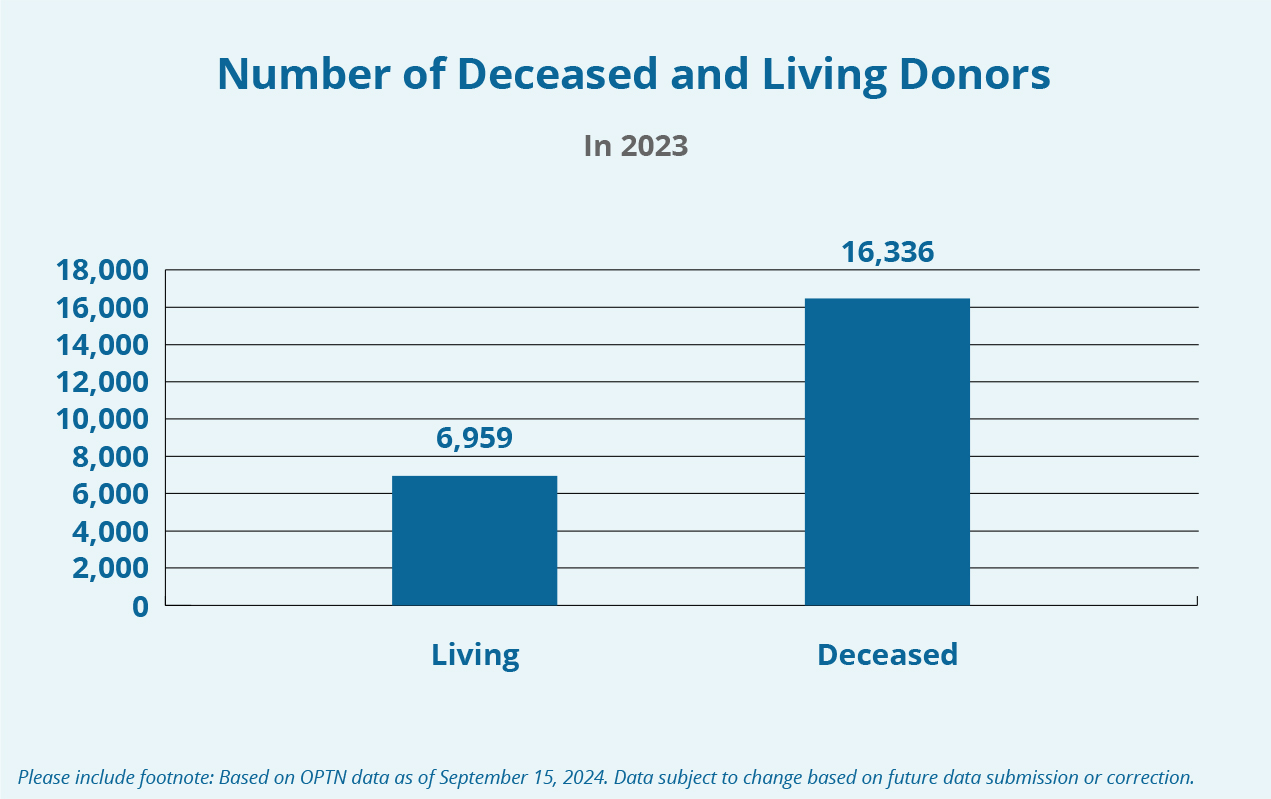
Detailed description of Number of Deceased and Living Donors
Some people choose to make a difference as living donors and donate certain organs or tissues while they’re still alive. Learn more about living donation.
As of 2022, 170 million people in the U.S. have registered as donors.
Not everyone who registers as a donor is able to donate. In fact, only 3 in 1,000 people die in a way that allows for deceased organ donation. That’s why more willing donors are needed.
Learn more about the deceased donation process, and secure your chance to save lives by signing up to be a donor.
